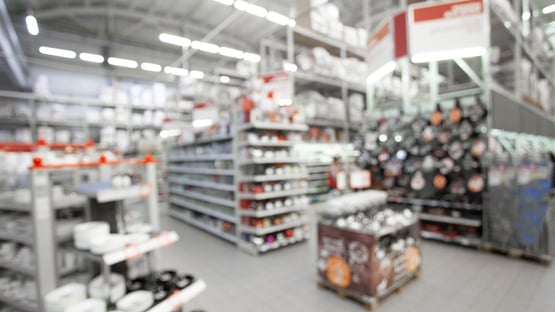Platform technology gives retailers greater control over their KPIs, so critical to operational efficiency in the current climate, says Duncan Potter, CMO at Pricer AB.
Investment in retail technology is driven by many different factors – a desire to be seen as innovative, a quick fix for a short term problem, cost savings, higher potential sales and so on; rarely is it based on the three most powerful motivators – revenue increase, lower costs and higher customer satisfaction.
Arguably, this is because few technologies fall into this category, but when they do, the results can be transformative. Fortunately, Covid did at least have the benefit of stimulating this kind of thinking.
In the post-pandemic world of high inflation, soaring operational and wage costs, supply chain disruption and the impact of unpredictable geopolitics, retailers have to think about technology from the point of view of competitiveness and operational efficiency. They can no longer run the old five or ten-year roadmap until all the scheduled tech is implemented, but must think about what they need to be effective in every single area of their business; there is no longer room for any areas of poor performance.
This is why there is now much more focus on platforms, on which retailers can add functionality over time knowing that everything will work together, nothing will need replacing and management will not add to their costs because everything is running in the Cloud under Software as a Service (SaaS).
At the shelf edge, this is about giving products a digital identity through labels, digital signage and shelf cameras to improve replenishment and inventory, enable click and collect and manage waste as well as the shopping experience.
Functionally, this is about enabling retailers to regularly and instantly change the price of goods, work to increase revenue and sales through pricing and promotional changes, and engage shoppers directly through in-store signage. Pricer itself uses many techniques to thwart the competitors, such as unique transmission technology using the near-infrared band to reduce energy requirements of the labels, increase the scalability of the solution and deliver a robust and more reliable infrastructure.
This then is the platform for adding app-based services such as location and route finding, product recommendations, and coupons.
For instance, to come to terms with the issues of shelf availability, gap detection, and planogram compliance in the stores, the Pricer ShelfVision solution combines machine learning and computer vision with a sophisticated wide-angle camera. The camera can automatically detect and identify electronic shelf labels and identify missing items on the shelves and give alerts to store staff through Pricer StoreApp or integration with existing staff management applications.
And because everything operates on the same platform, it is easy to report on the status and performance of every application, and to demonstrate how each is contributing to the organisation’s big KPIs – sales, margin, productivity.
An example of this in action is the French SAMSE Group’s L’Entrepôt du Bricolage, which uses a management approach called Symmetry of Attention, in which the adoption of Pricer’s optical wireless communication-based ESL system played an essential role in boosting operational efficiency.
Over the past two years, L’Entrepôt du Bricolage in France has been evolving in a restricted environment, affecting its promise of excellent relations and high-quality service. For L’Entrepôt du Bricolage, excellence in customer relations depends on a well-calibrated internal organization.
In 2010, the company was already reflecting on how it could ensure that its in-store teams were 100% available for greeting customers and best handling their requests. However, the market at the time wasn’t sufficiently developed in technological terms to put the electronic shelf label forward as a feasible solution for such challenges… Until Pricer introduced Instant Flash.
The initial tests with Pricer were carried out in 2018 in the Saint-Martin d’Hères (Isère region) pilot store, not far from Grenoble. However, the realization it triggered across the brand convinced L’Entrepôt du Bricolage to invest in electronic shelf labels from June 2019 significantly: they needed to capitalize on customer relations to carve out a niche in the market.
While L’Entrepôt du Bricolage was reviewing the organization of its stores, using teams dedicated to logistics (stocking products on shelves, order preparation, etc.) was the perfect opportunity for sales staff to focus more on advising and serving customers. L’Entrepôt du Bricolage’s gamble of accelerating the roll-out of its electronic shelf label project across its entire network paid off. 32 out of 38 stores were equipped in six months instead of the anticipated three-year timeline.
Platforms are not simply designed for the convenience of technologists, although this is a part of the equation because they do make integration, management and upgrading so much easier; the primary motivation is commercial – by building everything around the needs of the customer, it becomes easier for retailers to assort, price, promote, replenish and markdown based on a growing understanding of the customer. And for the customer to have an experience in store that is consistent, personalised and engaging.
Originally published in FMCG Magazine on July 12, 2022



